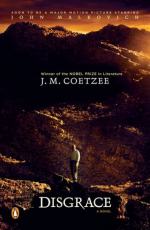|
This section contains 152 words (approx. 1 page at 400 words per page) |

|
Coetzee allows the characters to speak for themselves through the reliance on dialogue with minimal authorial interruption.
The story is seen through David Lurie's eyes, whose thoughts are related frequently.
This creates a certain distance from the other characters as Lurie attempts to understand his own feelings towards his situation and subsequently to understand the actions of the other characters. As the novel unfolds, Lurie increasingly escapes into his opera. Towards the end of the novel, the opera takes up entire chapters, gaining more precedence within the story. The female voice, speaking through Lurie, through the opera, becomes louder as the narrative turns to her. Coetzee uses the opera to allow Lurie's change to manifest through his approach to the opera and its conception. The tale of the aging mistress and the lost poet mirrors the changes that wreak havoc within Lurie's life and almost squelch his own...
|
This section contains 152 words (approx. 1 page at 400 words per page) |

|




